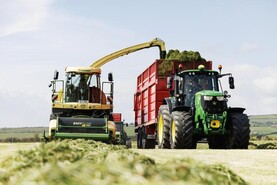The fodder deficit has eased somewhat. Rain has improved grass growth in the worst drought-hit areas. There’s been a rush by farmers in many areas to mow and bale spare grass.
Some contractors made more silage last week than in any week in June. There will be some mowing and baling next week too.
Crucially, ground conditions have – until this week anyway – been good and few cattle are yet housed. By this time last autumn, many farmers had brought stock indoors.
However, there still is a deficit and baled silage is generally being advertised at €25 to €35 per bale out of the field. In western counties, straw and bedding is now as much a concern as fodder.
Teagasc is running a campaign on fodder and finance budgeting and will hold over 30 seminars, clinics and farm walks over the next two weeks on planning for the winter.
Co Carlow Teagasc adviser Hugh Mahon said that the fodder situation remained tight on dairy farms. “Many will be relying on fodder crops. Thankfully, many of the fodder crops that have been sown are showing good potential.”
IFA Cork central chair Harold Kingston said that the fodder situation has improved dramatically over recent weeks in his area. “The extension of the deadline for spreading nitrogen fertiliser has been a big help. Most farmers now have at least 70% of their requirements. However, there are pockets of ground where growth was particularly badly hit and where deficits are still high.”
Sligo IFA chair JP Cowley said that fodder deficits had eased. He warned that if there is more rain this week then cattle will start to go indoors next week.






 This is a subscriber-only article
This is a subscriber-only article










SHARING OPTIONS: